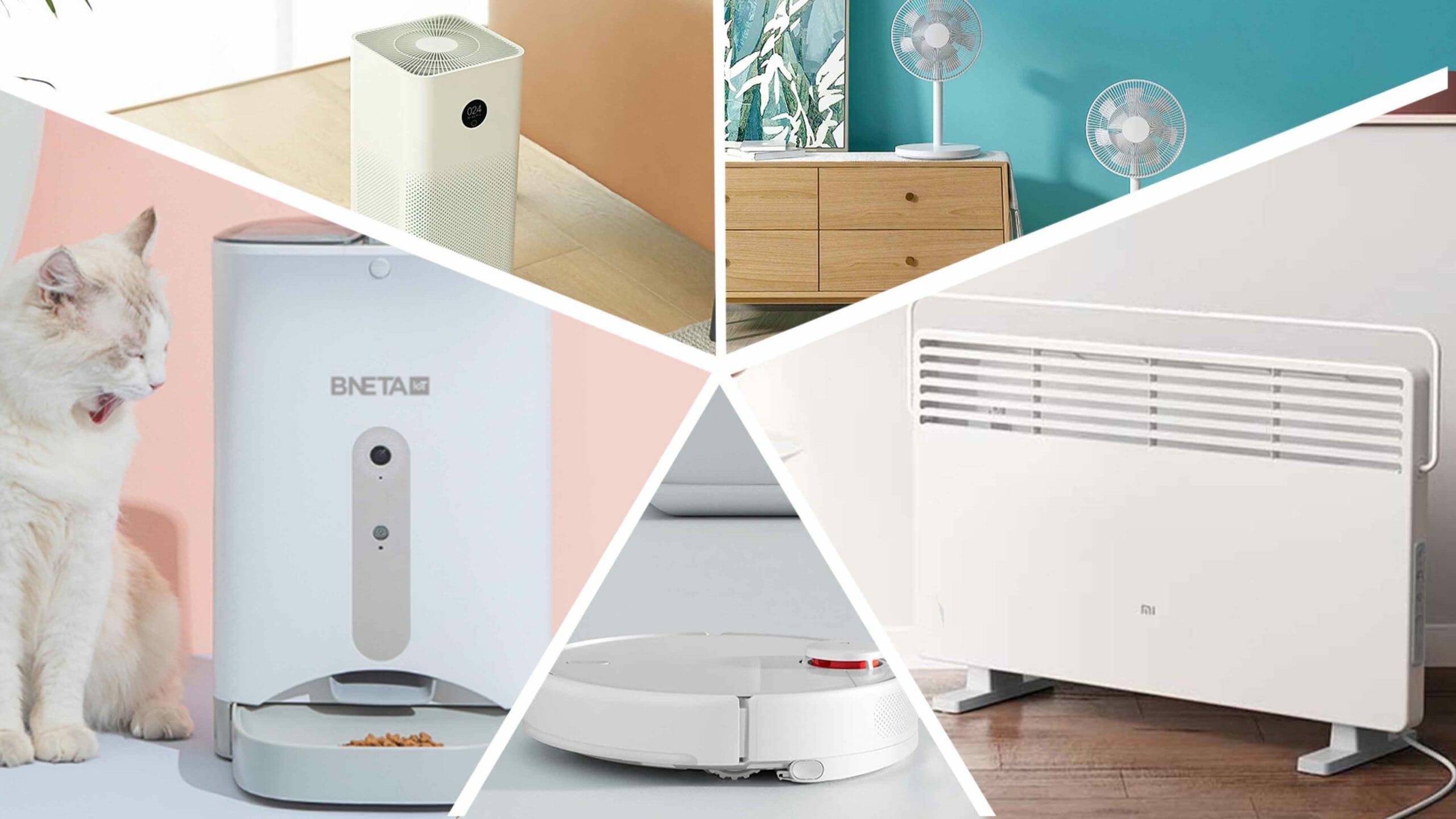Growing up in the 90s meant looking forward to a promising future thanks to films like Back to the Future (1985), Star Trek (1966) and Blade Runner (1982), among others. However, the projected future turned out to be vastly different from the one that arrived. While we might not yet be able to jump on our floating hoverboards or beam ourselves to anywhere in the galaxy, there are some ‘Smart Home Devices’ and technologies available that can help make the future feel slightly less like the past.
As 2022 continues to unfold, there are a myriad of smart home devices presently available for consumers to make use of. The Vamers team have spent much time looking into and procuring many of these devices; some good, some bad and some we can no longer imagine living without. As such, we have put together this list of five smart home devices we think every home would benefit from.
Although it is almost impossible to put together a definitive list of smart home products every house needs, the listed devices fulfil roles so universal that they should be able to fit in everywhere and instantly feel like they belong. Better still, each of the smart devices on this list are also available for purchase in South Africa.
Xiaomi Mi Smart Standing Fan 2
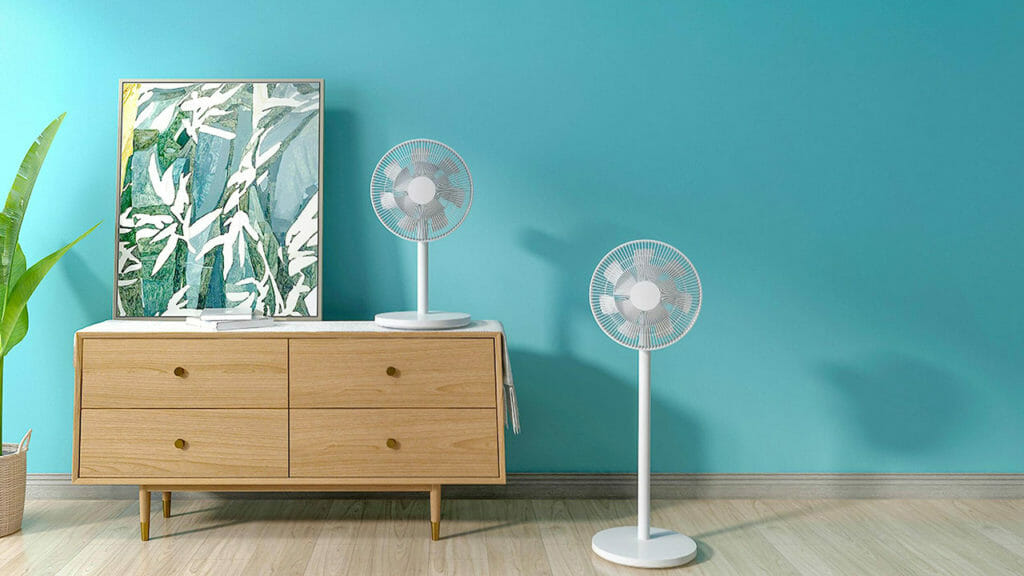
When deciding to take the plunge into the fantastical world of smart devices, one of the first products procured was a fan: the Xiaomi Mi Smart Standing Fan 2, to be exact. While many readers might fail to get excited about the prospect of a “smart fan”, our experience with it was so delightful that it was the start of an entire smart home collection.
Features:
The Xiaomi Mi Smart Standing Fan 2 boasts better airflow than regular fans, allowing for more powerful cooling and a gentler breeze. The fan comes with two settings, Direct and Natural Breeze. With the use of the Mi Home app, either of those settings can be fine-tuned in speeds ranging from 1 to 100. The fan can also be adjusted to stand on the floor or a table and has 140° ventilation.
The fan is surprisingly silent and gentle compared to how well it manages to cool a room. It comes with a 14-meter range and a DC copper-wire motor, which has better operating efficiency and longer service life than aluminium-wire motors. This DC motor also allows for constant speed, more stable ventilation and lowers power consumption.
Additionally, the Xiaomi Mi Smart Standing Fan 2 is also fully app and voice-controlled, making it the perfect device to add to a bedroom where adjustments can be made without the user needing to find a remote or get up off the bed/couch.
Setup/additional Costs:
The Xiaomi Mi Smart Standing Fan 2 is available for about R1700 and has no additional costs.
Personal Selling Point:
The hands-free experience. After the initial set-up and automation fine turning, there was never a need to intervene again. Now my house is kept at a constantly pleasant temperature and is precisely how I like it without ever needing to do anything.
Example Automations:
When setting up automations for a fan, one needs to account for the temperature and personal daily schedule. An example automation might be setting the fan to start 15 minutes before waking, switching to a natural breeze, and enjoying the soft and gentle wind to start the day. Another automation might be if the room temperature goes above X, the fan switches on and adjusts its speed accordingly. If the temperature drops below Y, the fan lowers the speed or switches off completely.
Pros and Cons:
- The direction and strength of the fan can be adjusted remotely, therefore there is no need to ‘stand up’ to try and get the fan to blow toward the perfect spot.
- The fan is lightweight and easy to move around.
- The air feels very “soft” when coming out of the fan, which might not be to everyone’s preference.
Xiaomi Mi Smart Space Heather S
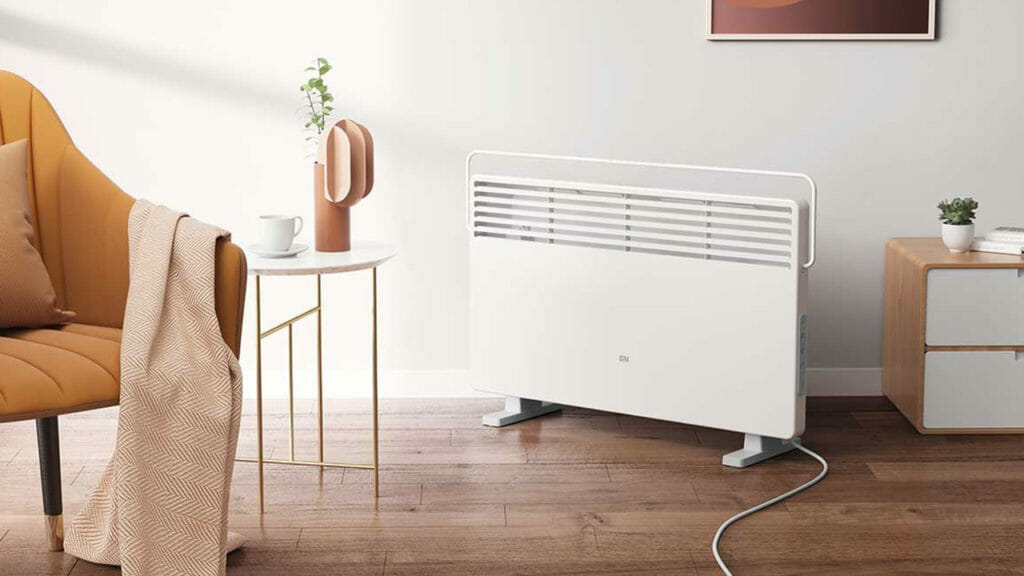
When searching for a heater to help make cold winter days and nights more bearable, it was imperative to find one within the smart device category. Over the years, many heaters have been put through their paces; ranging from portable electric, old school fin heaters through to even oil and gas heaters, yet none have ever lasted or felt quite right in a smart home.
The most significant benefit to using the Xiaomi Mi Smart Space Heather S over previous heaters is how it heats large, open-plan rooms within minutes. Better still, instead of the air feeling dry and the room feeling stuffy, the environment simply feels comfortable. Having the option to control the heater remotely has also been excellent and allows for much freedom when creating a home that always feels welcoming when you walk in the door.
Xiaomi Mi Smart Space Heather S Features:
One of the most surprising parts of using the Xiaomi Mi Smart Space Heather S is how fast it heats up. The device boasts 2200 watts of power and can heat a large room within minutes. The heater is also silent, making it a dream to have in a bedroom. It also has two safety mechanisms built in to ensure that it instantly shuts down if the device somehow overheats or is knocked over. It is child and pet safe, as the body of the heater does not ever heat to the point of burning, and everything else is hidden inside the device out of the reach of tiny paws or fingers.
The Xiaomi Mi Smart Space Heather S comes with full app support, voice control, and six adjustable temperature levels. There is also an adjustable bar attached to the heater meant to dry or warm clothes as needed, and the unit is splash water-resistant.
Setup/Additional Costs:
Pricing starts at roughly R3300 for the unit with no additional costs involved.
Personal Selling Point:
Being able to monitor the temperature of my home, even when away. Better still, being able only to ensure the house always feels toasty when arriving back home or making the environment pleasant for pets is a game changer. There is also the peace of mind that comes with knowing my pets will not burn themselves if they get too close to the heater.
Example Automations:
Setting up automations for a smart heater depends on your daily routine and how sensitive you are to the cold. An example of automation could be temperature specific whereby if it falls below X, the heater switches on, and if the temperature rises to above Y, it switches off. One could also create an automation switching the heater on an hour before bed, switching it off along with your lights and television an hour later, and then switching it back on an hour before wakeup – allowing you to wake to a nice toasty room.
Pros and Cons:
- The best overall experience I have ever had with a heater.
- It is expensive.
- It is big and will be annoying to find a place for during summer.
Xiaomi Mi Air Purifier 3h
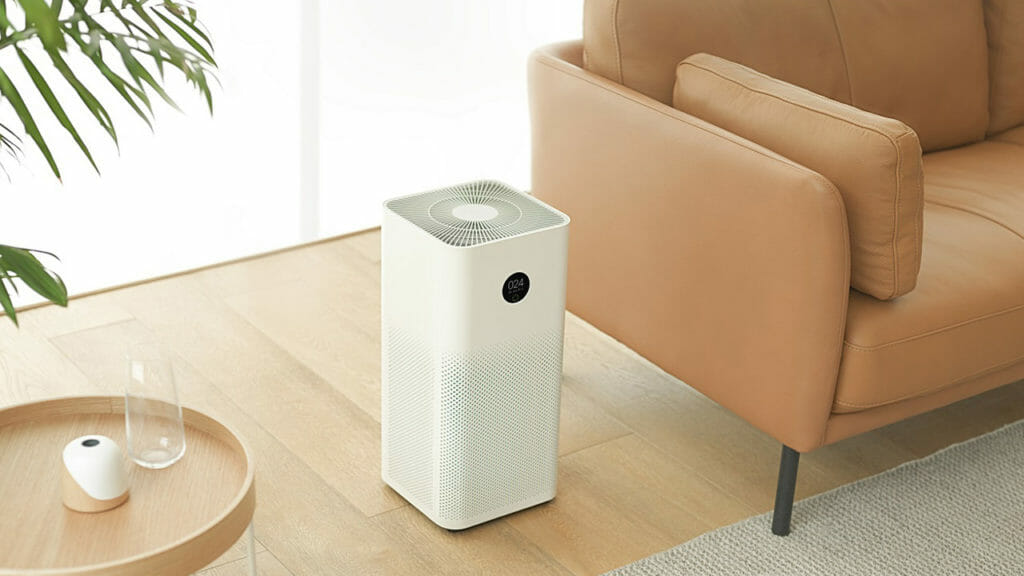
After years of popping a selection of allergy pills and sinus medication – akin to an episode of Euphoria – I sat down and started researching changes that could be made to alleviate allergy problems. One of the changes was to get a robot vacuum and run it every morning, removing a lot of the pet hair usually found around the house. Another significant change was to get an air purifier. In the most basic terms, an air purifier is an air vacuum. It is a box sucking in the surrounding air, running it through a HEPA (high-efficiency particulate air) filter, and then pumping it back into the room. This makes it the perfect device to capture small particles floating in the air before settling on furniture or being breathed in, and it also works wonders to clear smoke and steam from an area, for instance, while cooking.
Xiaomi Mi Air Purifier 3h Features:
One of the most surprising things about the Xiaomi Mi Air Purifier 3h is that it is almost entirely silent. This cannot be appreciated enough as my air purifier stands directly next to my bed and runs 24/7. The purifier comes with a high-efficiency filter and can filter out particles as small as 0.3 microns while delivering 6330 litres of purified air per minute. The device comes with a touch screen display, voice control and full app support.
Setup/Additional Costs:
The air purifier costs about R2600. Thereafter the the only additional cost is the HEPA Filter, which sells for roughly R350 and needs to be replaced every six to eight months, depending on how hard the device has to work.
Personal Selling Point:
Being able to breathe easier and not rely on allergy medication is a massive benefit not to be overlooked. The air purifier also shines when it comes to not worrying about smoke from braais or cooking lingering in a room.
Example Automations:
Setting up automations makes sense after observing one’s daily schedule. Generally a device like this would be on 24/7. However, there are times when it might need to work a little harder than normal. When it detects more particles in the air, like if someone starts cooking for example, or spraying deodorant in the morning; it changes to turbo until the air is back to an excellent purification level. If combined with a robot vacuum, it can also be set up to switch to turbo whenever the vacuum is running, thereby grabbing the loose particles from the air before they settle.
Two Pros And A Con:
- Being able to see the quality of the air allows for changes in behaviour affecting the air quality accordingly – it is also addictive.
- Experiencing a significant reduction in the amount of dust and fur in the room and general allergy symptoms.
- It is big and bulky, and finding a suitable space can be tricky.
Xiaomi Mi Robot Vacuum-Mop Pro
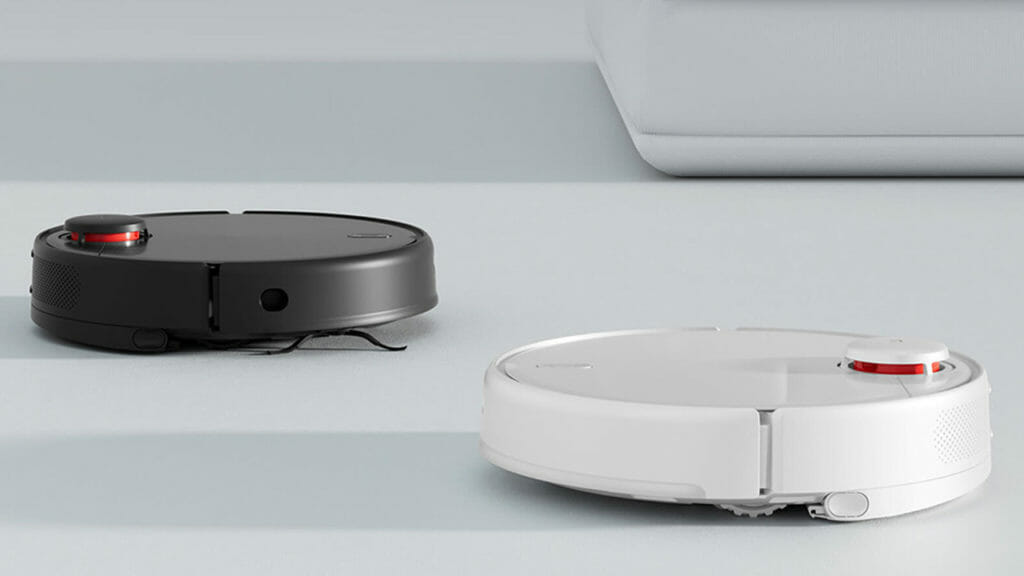
If there were ever a smart home device that feels futuristic and life-changing, it would be the smart robot vacuum. While one might think the novelty of robot vacuums has already passed and they are no longer exciting pieces of smart technology, it could not be further from the truth. It is hard to explain the joy experienced from having an always clean floor; yet never having to ‘think’ about cleaning it.
By now, most people are aware of robot vacuums, even if never having seen one up close. These devices are popular through media and social platforms alike because they are one of the most life-changing smart devices available.
Xiaomi Mi Robot Vacuum-Mop Pro Features:
The Xiaomi Mi Robot Vacuum-Mop Pro is a vacuum/mop hybrid requiring minimal human intervention. Using Lidar to map the floor plan around the house and to navigate; the unit roles around, cleaning as it goes. The vacuum boasts 3000Pa suction, which in layman’s terms means it is pretty much guaranteed to make tiles, wooden floors and most carpets hair and debris free. The Vacuum uses a HEPA filter to capture many fine particles and dust to stop them from becoming airborne. The dust bag can hold 450 ml of dust.
The mopping is fine, not good, not great, but fine. When the mop pad and tank are on, the unit will move in languid and deliberate Y shapes, allowing the mop to cover as much of the floor as possible. While the mop feature works well on wooden floor, it does not perform as well on large tiled areas; and is better suited to maintain an already clean floor than to clean one from scratch.
The unit cannot mop and vacuum at the same time. It is either or, at least for this model. The water tank and mop pad must be manually attached for the mopping action to be used. Otherwise the unit remains, first and foremost, a vacuum.
Setup/Additional Costs:
The Vacuum retails for roughly R7000, and then there are a few additional costs for maintenance. Filters need to be replaced every few months and cost about R169 for two. The mop pad costs roughly R200, and it will last a good few months depending on how well it is maintained and how dirty the floors are. Replacement side brushes for the vacuum are available for R199 for two, and the replacement for the main brush is R200.
Personal Selling Point:
I am constantly at odds with how much I do not particularly appreciate cleaning, yet appreciate having a clean space around me. Therefore having the vacuum run in the mornings before the alarm goes off means waking up to a pleasantly clean environment daily and starting the day off on a good note. It also frees up so much extra time that would usually be spent sweeping, mopping and vacuuming.
Example Automations:
By using the app, the vacuum can be scheduled to run at various times of the day and clean various rooms. An example of automation would be as follows. At five am in the morning, the vacuum switches on, switches off the fan and switches the air purifier to high. The vacuum then goes through the room, and upon returning to its charge base, it switches the air purifier back to normal and switches the fan back on again. The vacuum can also be scheduled to clean only selected rooms on certain days while vacuuming other areas daily or even twice a day. A schedule like this allows for a good balance between keeping the house constantly clean and not having the vacuum become obtrusive to everyday life.
Pros and Cons:
- Allows the house to be kept clean with minimal human intervention.
- Depending on the size of the space, the dirt tray might need to be cleaned regularly.
- It is not currently possible to keep the water tank used for mopping in the vacuum after the task is complete. Therefore schedule mop cycles cannot be made and need to be queued manually.
BNETA IoT Smart Pet Feeder
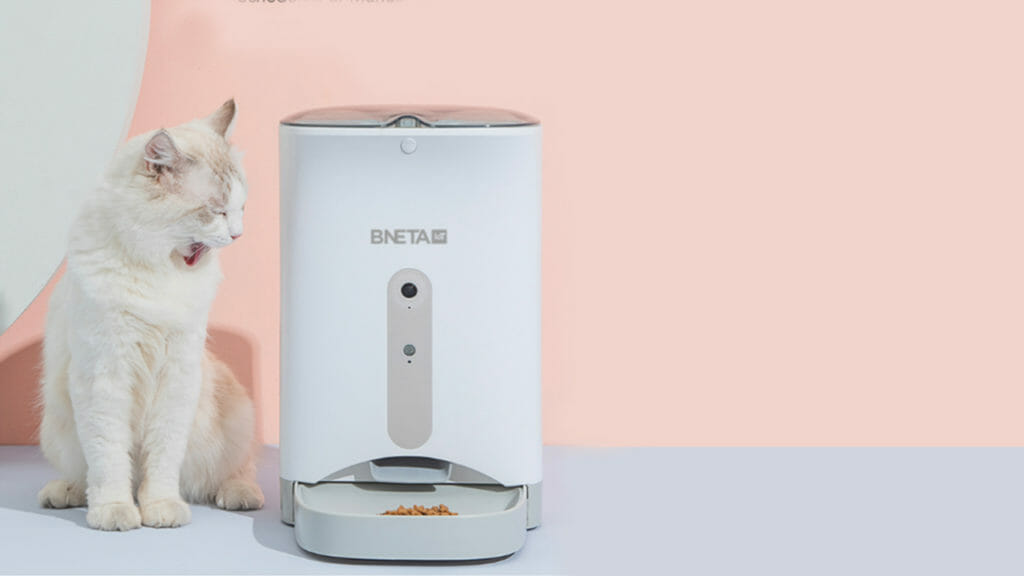
When first delving into the futuristic and fantastical world of smart home devices, it was hard not to allow the experience to feel overwhelming. The sheer amount of innovative technology available is seemingly endless, from lights to sensors, buttons, and switches. However, after evaluating my daily life and routine and identifying areas where smart devices would make sense and have the most significant impact on daily life, the experience became more manageable and enjoyable.
One of the identified tasks, which could be improved, was pet feeding. As anyone with a pet will know, pets are excellent additions to families and bring countless hours of joy and love to daily life. However, when said pet needs feeding before five am on a cold winter’s morning because it is now time for food, the perks of having a pet become somewhat harder to see. Enter the solution to this daily shot of icy misery: a smart pet feeder.
BNETA IoT Smart Pet Feeder Features:
The BNETA IoT Smart Pet Feeder is a WiFi-enabled, app-controlled pet food dispenser allowing users to maintain a healthy feeding routine for their pets by setting up accurate feeding schedules and feeding quantities.
Using the BNETA IoT App on any Andriod or IOS device lets users utilize the built-in HD Camera to monitor pets remotely, day and night, thanks to the built-in IR Night Vision. Users can also use the two-way audio to talk to their pets and even get notifications when the pet is at the dispenser, ensuring they are eating or giving them a little extra directly through the app.
It also supports dual power, allowing the device to use a power adapter but can fall back on the battery if the power cuts out, making sure pets never miss a feeding.
Setup/Additional Cost:
The BNETA IoT Smart Pet Feeder costs about R2200 for the entire unit, and then the two batteries required for making the unit loadshedding safe cost around R80.
Personal Selling Point:
Not waking up before the birds on cold winter mornings because my little balls of rage and fur have decided it is breakfast time. It has also been a significant relief when leaving the house to know tummies will not go hungry, and the feeding schedule will be adhered to, even without physically being home.
Example Automations:
An example of automation would be as follows. Every morning at five am, one portion of pellets (10 grams) is dispensed, and a notification is sent to ones phone that the feeding was successful. The BNETA IoT Smart Pet Feeder can also be set up to trigger a light, so said pet does not have to eat in the dark. At 12 pm, the dispenser dispenses a double serving of pellets. This time, the notification comes through when the pet starts eating, letting you patch through to the video stream, making sure everything is all right if not at home.
A few of the notifications that can be set up are:
The device picks up if there is no power; the device picks up that the food level is low and needs filling; the device is blocked; a feeding failed for some reason, and if feeding is successful but my pet does not go to eat for fifteen minutes.
Pros and Cons:
- Allows for peace of mind when not at home that food is still available
- The built-in camera and two-way microphone help soothe a pet with separation anxiety or even let you know if your pet is making a lot of noise.
- Unfortunately, this is not a solution for pets that eat wet food.
It is easy to get swept away by all the glitz and glamour of smart technology. However, if you want to incorporate smart devices into your life in a way that feels organic and comfortable, it is not about buying the newest and most expensive setups; it is about finding devices to make daily life just that little bit easier.
We might have a ways to go before the future promised during childhood arrives, but incorporating a few innovative pieces of technology into everyday life makes that future feel a little closer each day.
Have you tried any of the smart devices on our list? Let us know in the comments below.
As far back as she can remember, Arielle has loved comics, tabletop games and staying indoors. Although she might be terrible at history, she can tell you exactly how Wanda Maximoff and Sabrina Spellman are linked. Ultimately, she works to fund her Stephen King addiction and can pretty much always be found somewhere online.

